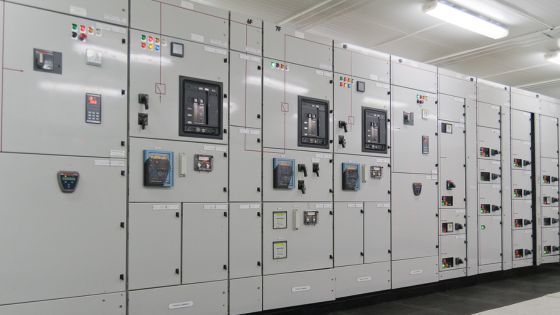In the world of electrical engineering, the design and layout of substations play a critical role in ensuring the efficient and safe distribution of power. Substation controls design is a vital aspect of this process, as it dictates how various components work together to manage and control electrical systems. In this informative guide, we will explore the importance of optimizing substation controls layouts and introduce you to the Substation Design Suite, a powerful tool that can streamline this crucial aspect of substation design.


The Significance of Substation Controls Design
Before delving into the details of optimizing substation controls layouts, let’s first understand why this aspect of substation design is so important.
- Reliability: A well-designed control layout ensures the reliable operation of a substation. It minimizes the chances of equipment failures and power interruptions, which are critical for industries and communities relying on a stable power supply.
- Safety: Safety is paramount in any substation. Proper controls layout helps in reducing the risk of accidents by clearly indicating the status of equipment, facilitating maintenance, and ensuring that safety protocols can be easily followed.
- Efficiency: An optimized control layout maximizes the efficiency of substation operations. It allows for better monitoring, control, and automation, which can lead to energy savings and cost reduction.
- Scalability: As the energy industry evolves, substations often need to be expanded or upgraded. A thoughtful control design makes it easier to accommodate changes and additions without significant disruptions.
The Substation Design Suite
Now that we understand the importance of substation controls design, let’s introduce you to the Substation Design Suite, a comprehensive software tool tailored for engineers and designers in the field of electrical substations. This suite is designed to streamline the process of optimizing control layouts, making it more efficient and effective.
Key Features of the Substation Design Suite
- AutoCAD Integration: The suite seamlessly integrates with AutoCAD, a widely-used software in the field of engineering and design. This integration allows you to create control layouts within your familiar AutoCAD environment.
- Library of Components: The suite provides a library of pre-designed control components, such as relays, switches, and indicators. This library helps save time and ensures that you have access to industry-standard components.
- Customization: While it offers pre-designed components, the Substation Design Suite also allows for customization. You can tailor control layouts to meet the specific needs of your substation project.
- Automation Tools: The suite includes automation tools that can assist in optimizing control layouts. These tools help you arrange components in the most efficient way possible, reducing the risk of errors and inefficiencies.
- Simulation and Testing: Before implementing your control layout, you can use the suite to simulate and test its functionality. This ensures that your design meets safety and operational requirements.
Step-by-Step Guide to Optimizing Substation Controls Layouts
Now that we’ve introduced the Substation Design Suite, let’s walk through a step-by-step guide on how to optimize substation controls layouts using this powerful tool:
Step 1: Define Objectives
● Begin by clearly defining your project objectives. What are the key goals you want to achieve with your substation controls layout? These objectives will guide your design process.
Step 2: Gather Data
● Collect all necessary data about the substation, including equipment specifications, safety requirements, and any relevant industry standards.
Step 3: Create a Base Layout
● Start by creating a base layout of the substation in AutoCAD. This layout should include all major components, such as transformers, circuit breakers, and switches.
Step 4: Select Control Components
● Utilize the Substation Design Suite’s component library to select and place control components onto your layout. Ensure that they are appropriately sized and positioned for optimal functionality.
Step 5: Customize as Needed
● Tailor the control components and layout to meet the specific requirements of your project. This may include adding labels, adjusting component placements, and defining control logic.
Step 6: Automation and Optimization
● Use the automation tools provided by the suite to optimize the layout for efficiency and reliability. Ensure that control pathways are clear and that safety measures are in place.
Step 7: Simulation and Testing
● Before finalizing your design, use the suite’s simulation and testing capabilities to verify that your control layout functions as intended. This step helps identify and address any potential issues.
Step 8: Documentation
● Generate comprehensive documentation of your substation controls layout, including wiring diagrams, component lists, and safety procedures.
Step 9: Review and Approval
● Collaborate with your team and relevant stakeholders to review the design and obtain necessary approvals.
Step 10: Implementation
● Once your design is approved, implement it in your substation. Monitor its performance and make adjustments as needed.
By following this step-by-step guide and utilizing the Substation Design Suite, you can optimize your substation controls layout for maximum reliability, safety, and efficiency.
Substation controls design is a critical aspect of electrical substation engineering. Optimizing control layouts ensures the reliability, safety, and efficiency of substation operations. The Substation Design Suite is a valuable tool that simplifies this process, allowing engineers and designers to create well-structured and efficient control layouts for their substation projects. With the right tools and a systematic approach, you can contribute to the seamless distribution of power in our increasingly electrified world.

























